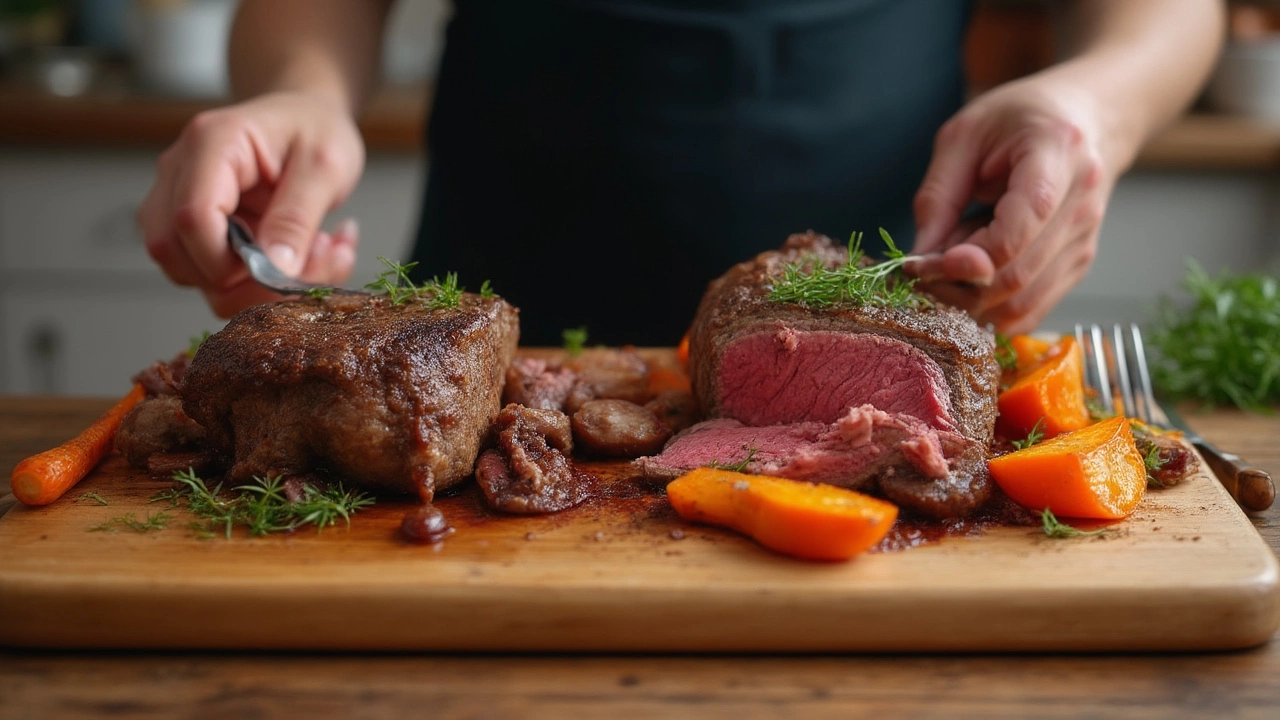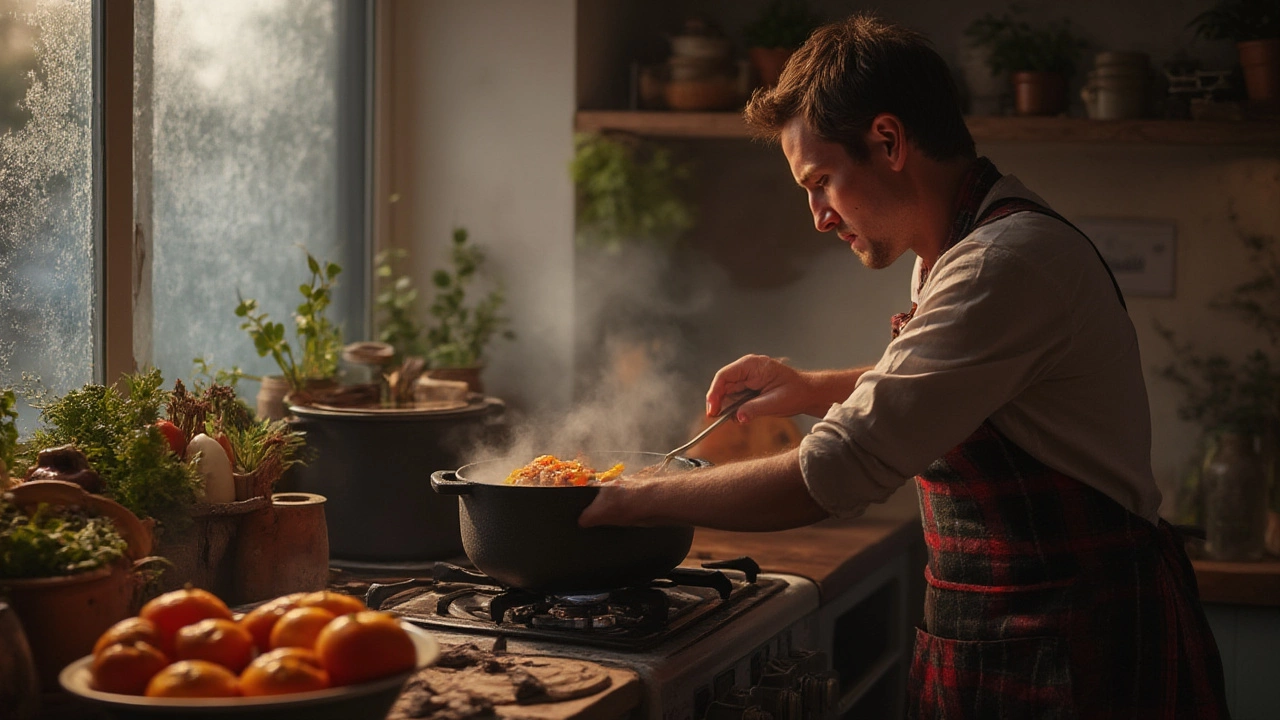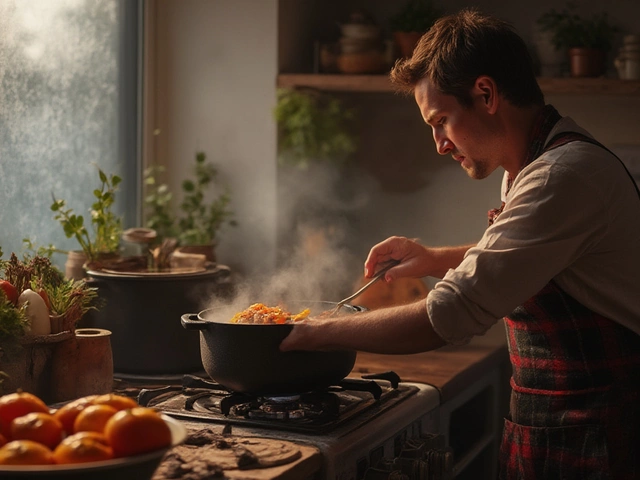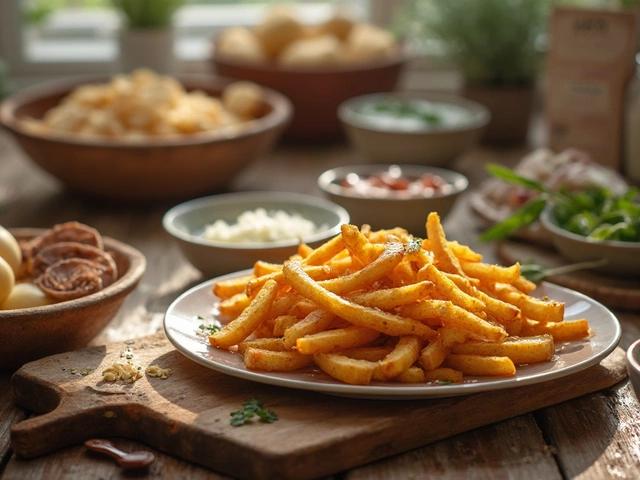You fire up your slow cooker in the morning, toss in a hefty piece of beef, imagine it simmering away while you’re at work, and let your hopes ride high for melt-in-your-mouth comfort food. But then, hours later, you walk in the door to a house smelling amazing—only to find the beef is about as tender as an old boot. If you’ve ever felt personally victimized by your slow cooker’s betrayal, you’re not alone. Lots of home cooks have wrestled with the dry meat mystery, and it feels a bit unfair when every cooking show promises slow cookers make tough cuts fall apart like magic. So, what’s really going on in that gently bubbling pot? Let’s get into the guts of why beef sometimes turns out tough, even after hours of slow cooking—and how to make sure your next batch comes out perfect.
The Science Behind Tender and Tough Beef
First off, let’s strip away the myths and dig into what really makes beef tough or tender. Beef is muscle. The more a muscle works, the tougher it gets—that’s why cuts from the shoulder, as in chuck, or the leg, like brisket or shin, are always chewier than a fillet steak. Cut matters in the slow cooker. But here’s the twist: tough cuts aren’t a problem—in fact, when prepped right, they’re the secret to the best stews, shredded beef, and roasts. Why? It all comes down to collagen.
Collagen is the chewy connective tissue lacing tough cuts of beef. When you hit it with low-and-slow heat, collagen turns into gelatine, which is soft, silky and the stuff of perfect stews. But, and this is key: collagen transforms only at the slow simmer sweet spot—around 85°C to 95°C (185°F to 203°F). Higher or lower, and things get dicey. If your slow cooker runs too hot or you lift the lid too often—letting out heat and moisture—toughness sneaks in. Oddly, modern slow cookers often hit higher temps than older models, aiming to keep food "safe," but sometimes they overdo it.
Here’s a practical fact: keeping your slow cooker full to at least halfway helps regulate temperature. If it’s too empty, it heats up faster and risks cooking your beef too fast, making it stringy instead of tender. According to a study by the US Department of Agriculture, collagen breakdown works best after at least 2 hours above 160°F (71°C), but the magic really happens at higher temperatures over a longer stretch. And remember, the transformation from tough to tender doesn’t even begin until that collagen starts to dissolve, so patience—plus keeping the lid shut—is the game.
Compare this with the cuts people sometimes use by accident—like sirloin (a steak cut) that’s naturally tender but can dry out since it lacks enough collagen to handle hours in the slow cooker. Sirloin and leaner cuts end up overcooking, so they’re better off saved for frying or roasting.
Choosing the Right Cut: The Secret Ingredient
If you’ve plonked a random piece of beef in your slow cooker hoping for greatness, you’re not alone. But the slow cooker beef magic only happens with the right cuts. The best ones are usually labeled as “braising steak” or “stewing beef”—think chuck, brisket, shin, or oxtail. These cuts are loaded with collagen and they cost a lot less than fillet or ribeye.
Why does that matter? Fat and collagen add flavor and texture. As it melts, collagen becomes that luscious sauce and keeps the meat juicy. Without enough of it, you’ll notice your beef is tooth-tugging and dry, no matter how long you leave it simmering away. You might think using pricier lean steaks gives better results, but in the slow cooker, it’s the other way around.
Here’s a handy table showing the best cuts for slow cooker success:
| Cut | Texture Raw | Texture Slow-Cooked | Common Dishes |
|---|---|---|---|
| Chuck | Very tough | Fall-apart tender | Stews, shredded beef, pulled beef |
| Brisket | Dense, chewy | Velvety, juicy | Pot roast, brisket tacos |
| Shin/Shank | Firm, fibrous | Sticky and rich | Beef stew, Osso Buco |
| Oxtail | Cartilaginous, bony | Gelatinous, melt-in-mouth | Oxtail soup, stews |
| Short Rib | Tough, well-marbled | Buttery, soft | Korean BBQ, bourguignon |
Food trend watchers know brisket and short ribs have boomed in popularity, partly thanks to slow cookers and pressure cookers being so widespread now. Still, supermarkets sometimes label things as “stewing beef” without saying what cut it is, so ask if you’re not sure. Or check for visible marbling and connective tissue—it’s a sign of flavor down the line.
If you want to switch it up, try beef cheeks or even ox tongue in the slow cooker—both turn from tough to ridiculously tender after eight hours on low.

Common Slow Cooker Mistakes That Lead to Tough Beef
Poking around food forums, this is where loads of cooks go wrong. The first mistake? Not browning the beef. Yes, it’s an extra step. But searing the meat in a frying pan before you slow-cook does two massive things: it builds flavor with all those little brown bits (thanks Maillard reaction!), and it helps lock in juices. Raw beef straight into the slow cooker means you miss out on both.
Second? Using too little liquid. Beef dries out fast if there’s not enough broth, wine, passata, or even water in the mix. You want at least enough to come halfway up the meat—ideally about two-thirds. If you like a thick stew, thicken it at the end instead of risking dryness by skimping from the start. And remember: veggies release water as they cook, so factor that in.
Another easy-to-make blunder: cooking on high for speed. Slow cookers offer a low or high setting, and it’s tempting to crank it up to get dinner done. Trouble is, high heat cooks the outside meat too much before collagen softens. Stick with low and let time do the heavy lifting. That means eight hours low, at the very least—sometimes even ten, if it’s a large joint or brisket.
Here’s a quick-fire list of slow cooker beef mistakes that lead to chewy disappointment:
- Picking the wrong cut (lean steak instead of braising beef)
- Not browning the beef before adding it in
- Adding too little liquid to the cooker
- Lifting the lid to check too often
- Cooking on high instead of low and slow
- Salting early—salt can draw out moisture, so wait to season until later in the cook
- Not letting the meat rest after it cooks—it needs a few minutes to chill before serving
Quick tip: take the beef out when it’s barely fork-tender, let it sit covered in foil for 10-15 minutes, and you’ll be shocked at how much juicier it is.
How to Guarantee Tender Slow Cooker Beef Every Time
There’s no magic or secret society handshake required—just follow a few time-tested steps, and you’ll lift that lid to sigh-worthy results. Here’s a roadmap:
- Choose the right cut: Stick to chuck, brisket, short ribs, oxtail, shin, or cheeks.
- Brown the beef: Get a hot pan, pat your beef dry, season, and sear until brown on all sides—don’t crowd the pan.
- Layer smart: Place root veg like carrots or onions at the bottom—they’ll absorb flavor and moisture. Rest your seared beef on top.
- Add enough liquid: Broth, wine, or tinned tomatoes work great. You want enough to cover at least half the meat.
- Flavor boosters: Fresh herbs, garlic, or Worcestershire sauce lift a basic stew to the next level.
- Low and slow is the way: Eight hours on low will soften collagen perfectly; high heat is a last resort.
- No peeking: Every time you lift the lid, you lose heat and stretch out cooking time. Only open to check for tenderness at the end.
- Let it rest: Remove the beef when it’s fork-tender and cover with foil for 10-15 minutes so juices redistribute.
- Season at the end: Adjust salt and pepper, add fresh herbs or a splash of vinegar for a punchy finish.
If you’re aiming for bite-sized pieces, cut your beef into chunks across the grain—this shortens the muscle fibers for a softer texture.
One powerful detail: add a spoonful of vinegar or wine at the start. Acidity helps break down collagen, nudging you closer to that melt-in-mouth perfection. The science on this is clear—acid marinades soften beef even before the heat gets involved.
For a silky gravy, take a cup of the cooking liquid, whisk in a tablespoon of flour or cornflour, and bubble it up in a small pan till thick. Stir it back into the finished dish, and you’ve just given your stew a restaurant-style finish.

Extra Tips and Facts Most Folks Miss
Slow cooker beef feels simple, but there’s always more to learn. For one, what about frozen beef? Always thaw completely first—straight-from-frozen beef takes too long to reach safe temperatures, which is a food safety no-go, even if you’re in a rush. Baxter, my Labrador, would definitely approve (he always makes sure I don’t risk dodgy meat in casseroles).
If you’re using a modern slow cooker, check your instruction manual for actual cooking temps. I’ve had one cooker in Brighton that ran so hot, it turned stew into dry shreds in six hours until I started filling it to the max fill line. Quick fix if your cooker gets hot: add more liquid, or try propping the lid very slightly ajar with a wooden spoon to cool things down a notch—but only do that if you know what you’re doing, as it can slow down cooking and risk raw spots.
Did you know that leftovers reheat best if you add a little broth or water to stop the meat from drying out? Leftover beef stew tastes even better the next day—one of the few “second day” magic foods. If you’re prepping ahead, store beef sliced in its cooking liquid for super-juicy results.
For a veggie bonus, add root veg first and quick-cooking greens like spinach right at the end. This gives you juicy beef and soft veg without the green mush. And if you’re gluten intolerant (like some of my mates here in Brighton), use cornflour instead of wheat flour for thickening—it works just as well.
Each slow cooker is a bit different, so try jotting down tweaks each time. You’ll find the sweet spot for your machine, plus your go-to flavors and combos. Before long, tough beef will be ancient history—your stews will be the talk of every chilly Brighton night, and Baxter will probably eye up your plate with even more enthusiasm than usual.








Write a comment